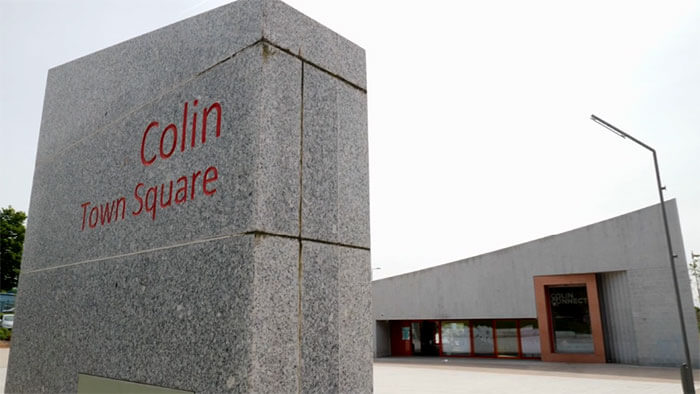A History of Colin
From ancient Celtic times to the modern day: we have it all
Secrets, heroes & legends: A short history of Colin
The Colin area gets its name from the mountain that overlooks it – Colin, a small mountain south-west of Belfast that almost completes the line of hills that surround the Co Antrim side of the city, pretty much all parts north and west of the river Lagan.
At 900ft (300m), Colin isn’t a big mountain – but its slopes contain both riches and stories beyond its physical height. Winter floods have been known to pour forth a range of fossils, from ammonites to plesiosaur vertebrae, that lie hidden in its rocks.
Celtic and Medieval times
Well known for lovely Colin Glen Forest Park, the mountain, glen and the region around it were home to pre-Christian, Celtic, and medieval structures, including mass rocks, holy wells, simple stone churches and scattered ring forts. Later, after the Plantation of Ulster, Elizabethan military commanders made places like Castle Robin their fortified home.
The hills above Colin contain many Mass rocks from Penal Times when Catholics and Presbyterians were discriminated against and where heroes like Belle Steele helped raise the alarm against Redcoats enforcing the harsh laws. Belle now has a road named in her honour.
As the Penal Laws began to be relaxed, chapels like the one in Hannahstown began to be built, and priests were able to say Mass in public without persecution. Small Mass houses like St Patrick’s, Derriaghy also opened.
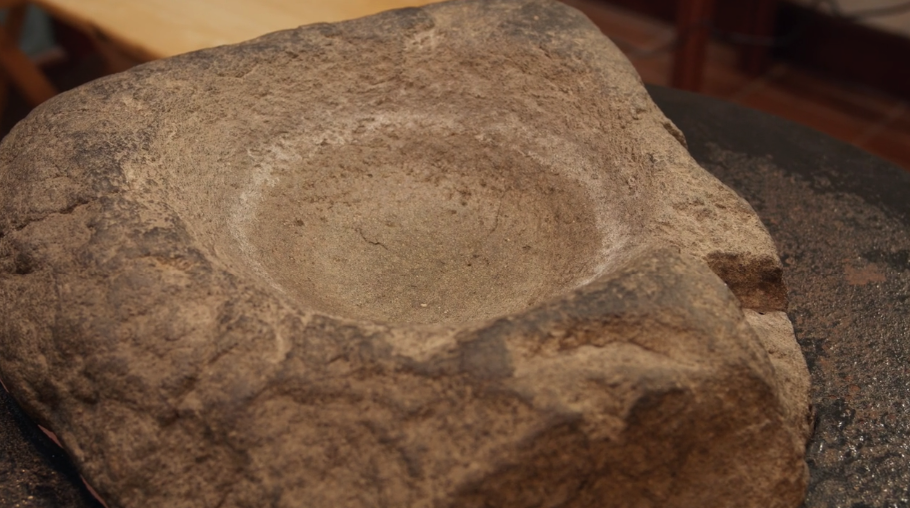
A fascinating relic from Medieval times that has survived is housed in Our Lady Queen of Peace Church on Dunmurry Lane.
It’s a holy water font (left) that belonged to the medieval church at Kilwee, situated where the Cloona housing estate now stands.
The font was found accidentally when a mill dam at Cloona was drained around 1850.
Thankfully, it was preserved. Eamon Phoenix tells the full story in the video at the top of the page.
1798: The United Irishmen
The area has many links to the United Irishmen and their uprising, but perhaps the best known is Teeling’s Mill. This is the remains of a mill once owned by the Teeling family, who where heavily involved with the 1798 rising.
One of those sons, Bartholomew Teeling, went to France to seek French revolutionary military aid, fought in two battles in the west of Ireland in ’98 and was executed by the British not long afterwards. His final letter became a rallying cry for supporters of the rebellion.
But there was much other activity besides the Teeling family. We know that, for example, in 1798, a souterrain in Hannahstown was searched by the military looking for pikes, the long spears used by the United Irishmen at the Battle of Antrim. Whatever they found there, they removed and sealed up the search area for all time.
We also know that in 1798, the military opened a temporary barracks for the redcoats on the site of the prison chapel at Hannahstown.
“If to have endeavoured to give my native country a place among the nations of the earth was treason, then I am guilty indeed.
From Bartholomew Teeling's final letter
The Lion of Dunmurry: Rev Henry Montgomery
The area’s history is rich in churches, religion and of course the history of religious difference, not least in the 18th and 19th centuries.
One Presbyterian minister in the 1800s became particularly well known – the Reverend Henry Montgomery.
Known as the “Lion of Dunmurry”, Rev Montgomery was a legendary figure who founded the Non-Subscribing Presbyterian Church of Ireland after clashing with the influential and more conservative Presbyterian leader, Rev Henry Cooke.
After losing the argument with mainstream Presbyterianism, Rev Thompson led his supporters out of the church to found the Remonstrant Synod Of Ulster, the cornerstone of the Non-Subscribing tradition.
With his moderate liberal views and support for Catholic emancipation, the Reverend was known across Ireland.
Indeed Daniel O’Connell, the “Liberator”, once stayed in the manse at Dunmurry Non-Subscribing Presbyterian Church.
The church today, which dates from 1779, remains one of the most striking features of Dunmurry, with its plain but lovely features in Scottish “barn-style” architecture.
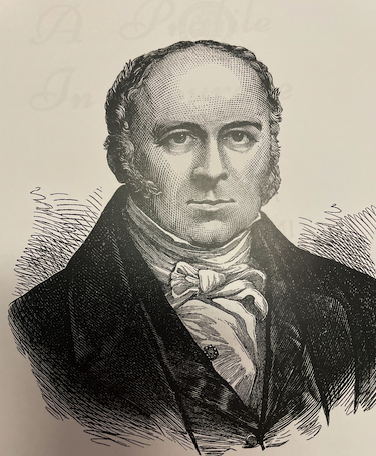
Linenopolis: Rise of the Big Houses
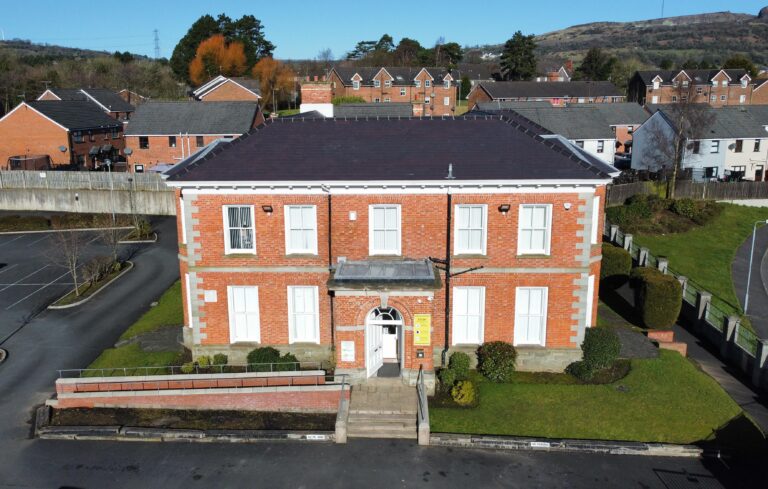
With industrialisation and in particular the Victorian area, Belfast became a ‘Linenopolis’, with linen grown, processed and exported across the world. Wealthy families blossomed – the Grimshaws, for example, built Cloona House (above), a Victorian mansion in Italianate fashion.
The story of Cloona is a fascinating one, with daughter Beatrice Grimshaw being an early almost- feminist pioneer, and dad Nicholas Grimshaw having to vacate the mansion he lovingly constructed after proving a business flop, unlike his industrial magnate father.
Other wealthy families settled in, including the Jaffes, who, outrageously, had to flee Belfast during World War I because of their German heritage. Watch our video The Secrets of Cloona House, for more.
Other big houses and wealthy families in the area includes the Hamills, wealthy Catholic landowners whose crypt still stands at Hannahstown chapel, and the McCances of Trench House, whose lovely stained glass window still sits in Dunmurry Non-Subscribing Presbyterian Church. Trench House itself, unfortunately, was knocked down in the 80s.
There’s something of a mystery over Colin House, now vanished but which sat in stunning grounds overlooking what is now Poleglass. Churchill’s Imperial Secretary for Northern Ireland once resided there, as did portable defibrillator inventor and ‘Railway of Death’ survivor Frank Pantridge.
The Twentieth Century: blood and belonging
The Twentieth Century saw more fascinating history in the Colin area. Cloona was transferred away from its last big family owner to become the residence of the British Army General Officer Commanding (GOC) in Northern Ireland.
The estate of Twinbrook began to be developed in the 1960s to accommodate people who needed homes due to ‘slum clearance’ in inner Belfast. Plans for a model, cross-community estate fell apart under the sectarian pressures unleashed by the modern Troubles and the area was overwhelmingly nationalist and Catholic by the 1970s.
With the increasing need for housing, Poleglass and other areas were developed. The GOC’s residence became increasingly isolated and indeed the GOC relocated to Thiepval Barracks in Lisburn, and Cloona House was bought by the Catholic Church.
By the end of the 90s, the Colin area’s population was numbering around 30,000 – remarkable for an area that a quarter of a century earlier had been green countryside.
The Life and Death of Bobby Sands
One of the families who re-located to Twinbrook due to sectarianism was the Sands family. Bobby Sands would go on to become one of the most influential figures in modern Irish history after being elected an MP as he embarked on a hungerstrike in the Maze prison.
His funeral attracted up to 100,000 people and is said to have been the largest funeral in Irish history.
Through his personality, writings and political thinking, Bobby Sands was highly influential in reshaping Irish republican thinking away from heavy reliance on militarism and towards the development of political strategies.
We refuse to lie here in dishonour. We are not criminals, but Irishmen! This is the crime of which we stand accused.
Bobby Sands
Rich past, bright new future
Once marginalised, the Colin community is going from strength to strength. Thanks to the work of the community, including Colin Neighbourhood Partnership and many others, including our funders and the work of the late councillor Michael Ferguson, in whose honour a roundabout was named, we have a new identity to be proud in, a new leisure centre, transport hub, park and much more.
There’s a vibrant community spirit, and facilities and life opportunities that were once lacking are now present. We have some ways to go, but we can now say with pride that we live in Colin, our homeplace.
